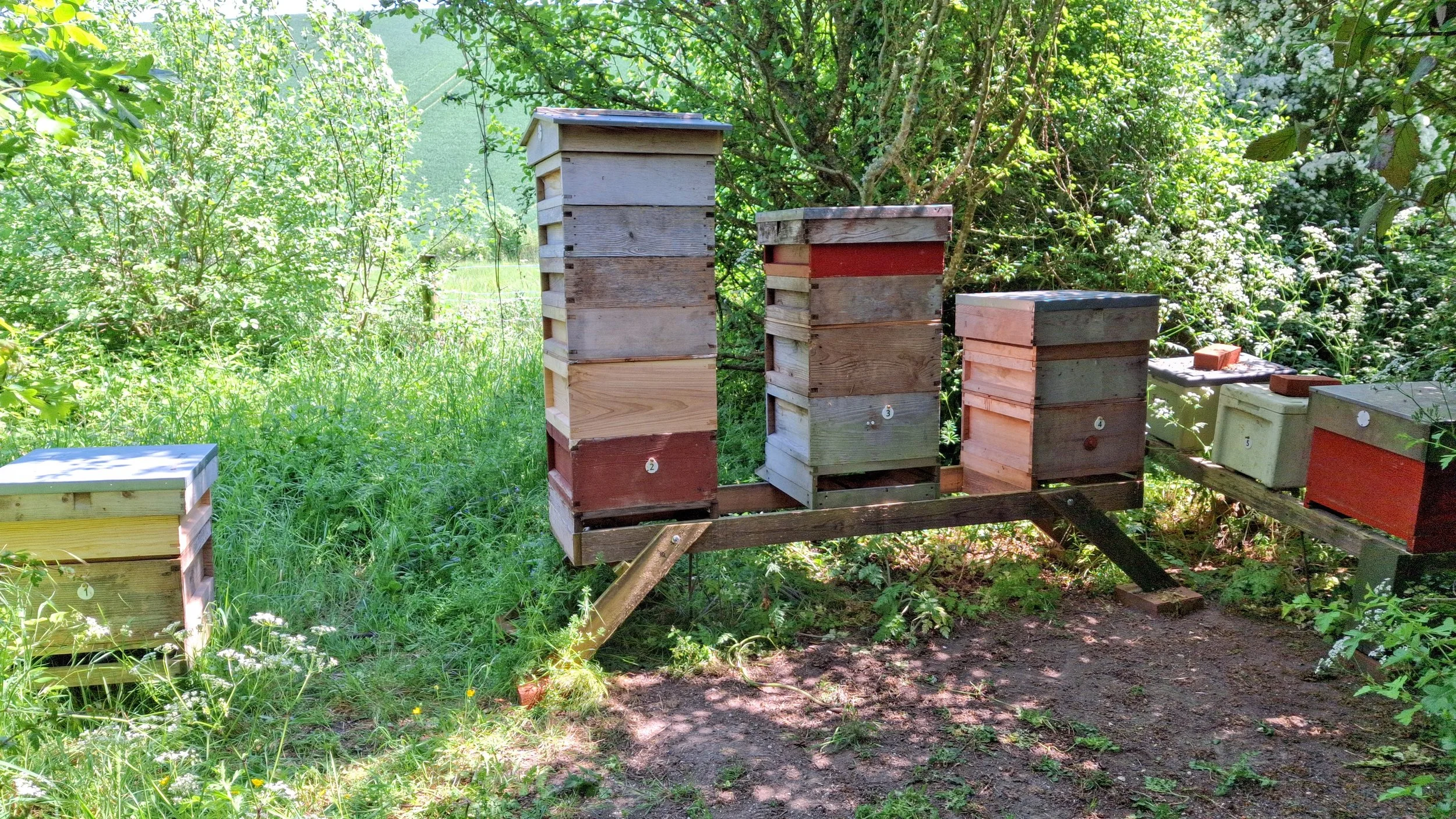Sticky Situation: A Seasonal Surprise in the Hive
Our seasonal report from our on-site beekeeper and local apiculturist, Manek Dubash.
Honey: the annual crop from the bee hives has arrived. Or at least, I thought it had. Over the years, I’ve habitually taken a spring crop around the end of May, and a summer crop around the end of July. Anything they gather after that is for them to get them through the winter.
So it was with anticipation that I pulled off a batch of supers—the shallow boxes full of honey at the top of the hive stack—and fitted the frames into the extractor. This device is a form of centrifuge that spins out the honey from the comb once I’ve uncapped the honey-filled cells. But this year, things didn’t go to plan.
Extraction is a labour-intensive business. The extractor needs to be cleaned even though it was put away clean last autumn. Everything that might come into contact with the honey also needs to be spotless. Then it needs to settle, be poured into jars labelled and shipped. That’s not how it worked out.
With everything ready, I fitted the first batch of frames into the electric motor-driven spinner cage, pressed the button and waited while the glorious thick liquid was thrown out of the comb.
You can’t spin too fast at first or the comb will collapse from the weight of honey behind it. You’ve got to take it slow to start with, and only speed up as the comb empties. Under the extractor’s honey gate or valve was a food-grade bucket, on top of which was a double strainer, which removes bits of dead bee and wax before they make it into the honey that will be bottled. That’s the only processing it gets from me.
Strangely, I was finding that the honey wasn’t flowing through the strainers very quickly. In fact, the honey started setting solid even before I’d finished straining it. For a beekeeper and even for the bees, this is a bit of a disaster: it was clearly oil seed rape or OSR honey.
OSR honey is pale, renowned for being fairly bland, and will set hard really quickly. So much so that in fact even the bees, who enthusiastically collect this early spring crop, won’t be able to do anything with it when they need it.
So now I had about 10kg of pale, solid, bland honey in a bucket. What to do? Luckily a beekeeper friend could use it to seed some runny honey and make a soft-set honey out of it. The good news is that OSR goes over quickly so the summer crop won’t be problematic. Or will it?
Watch this space!

